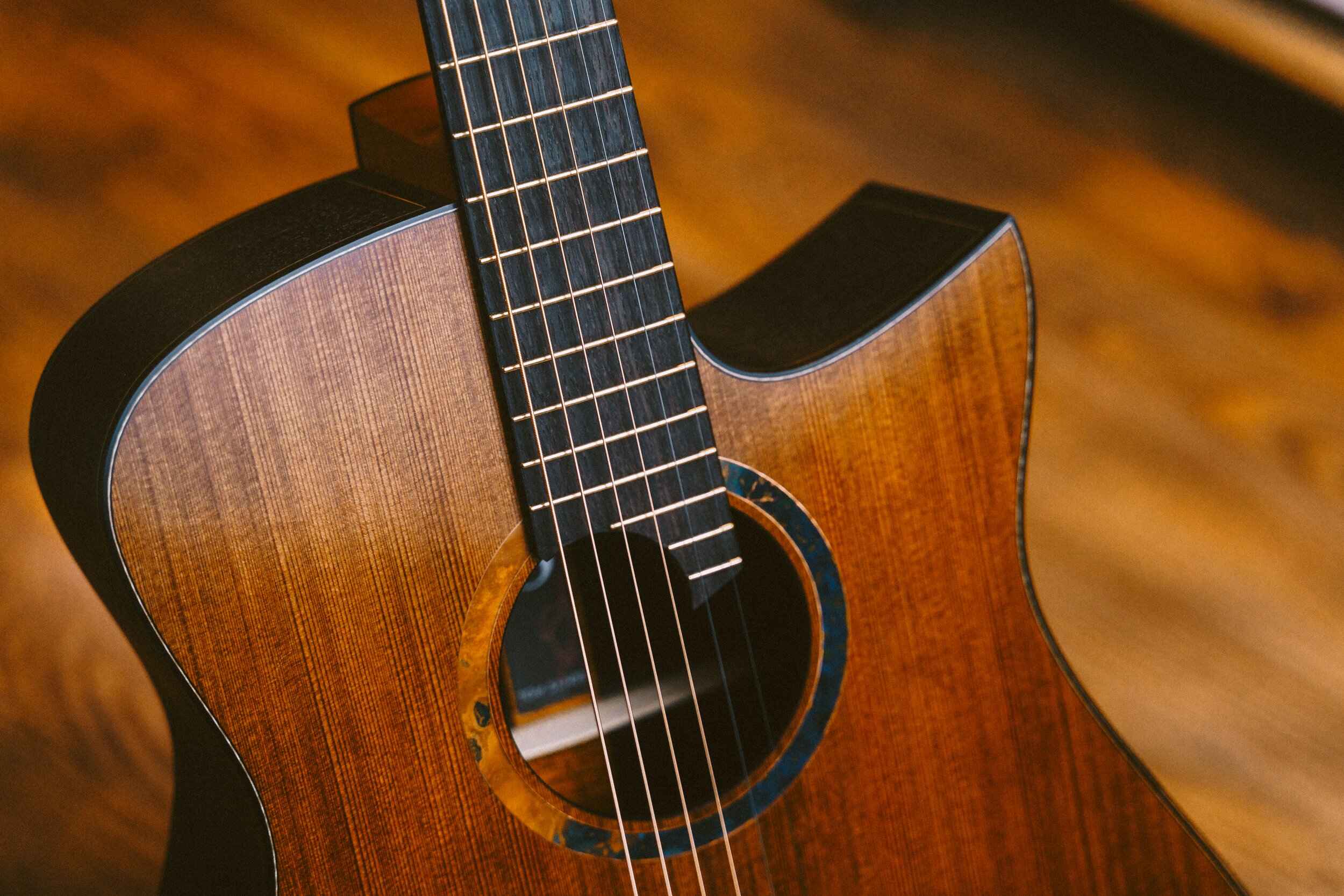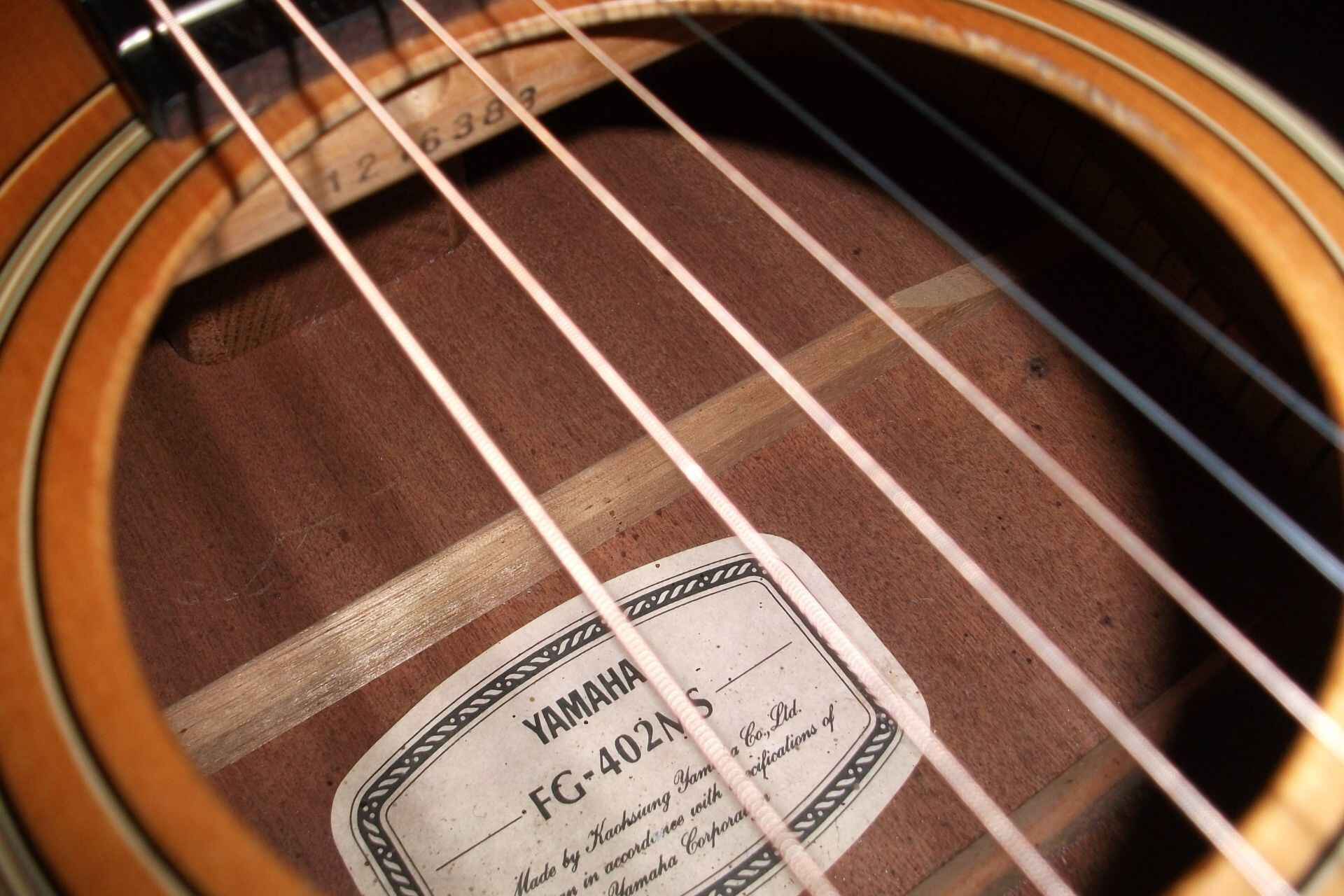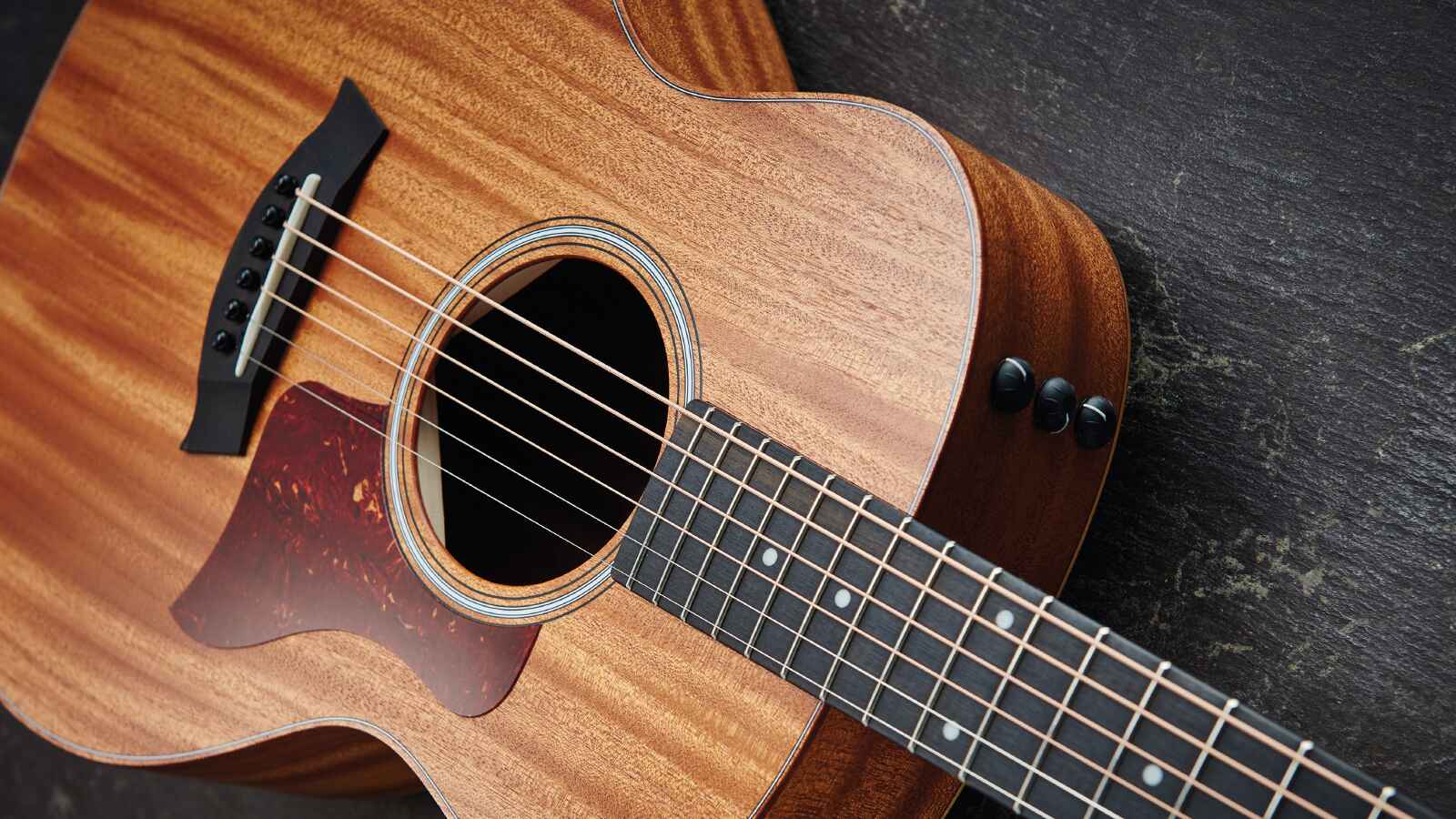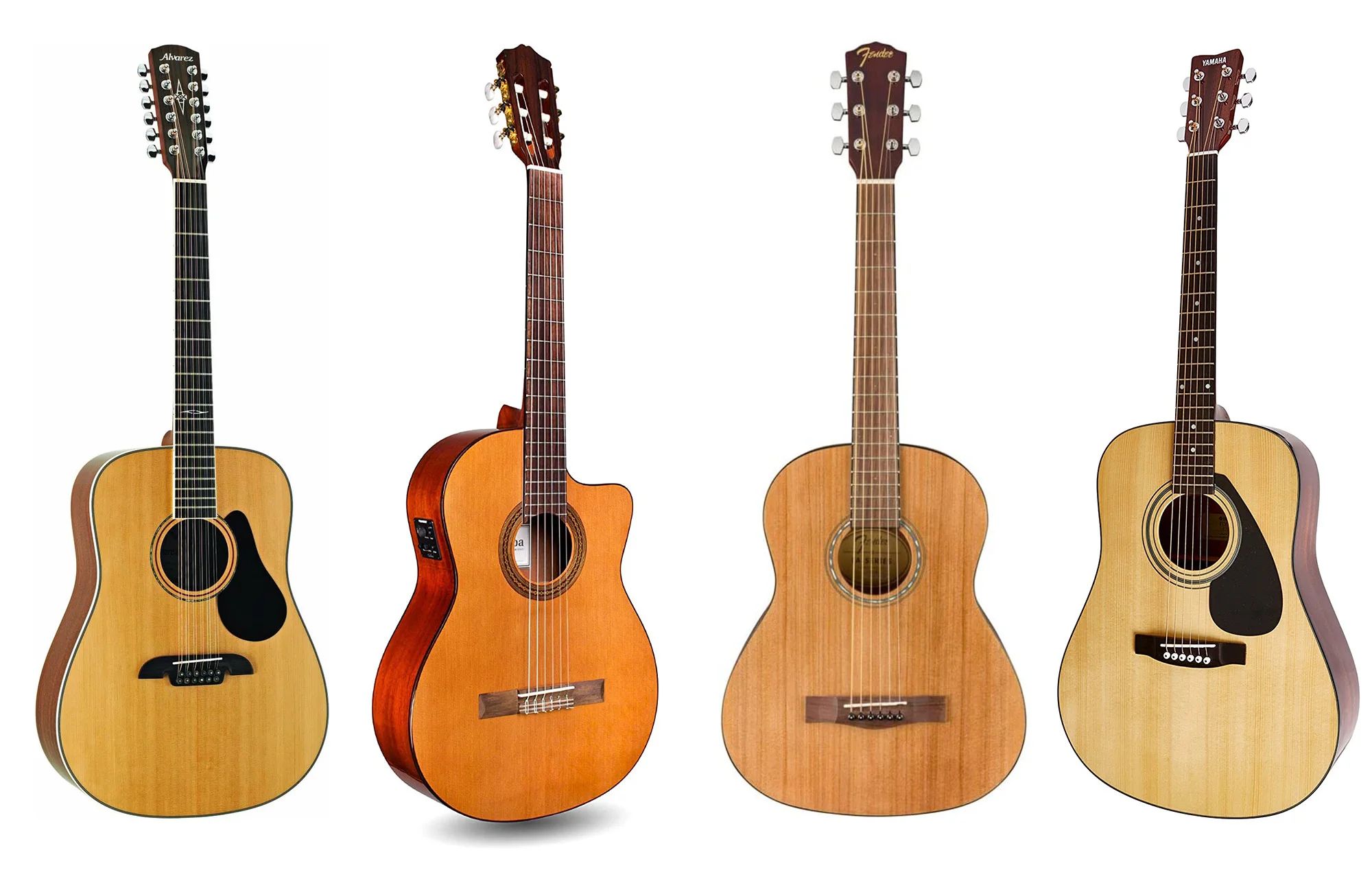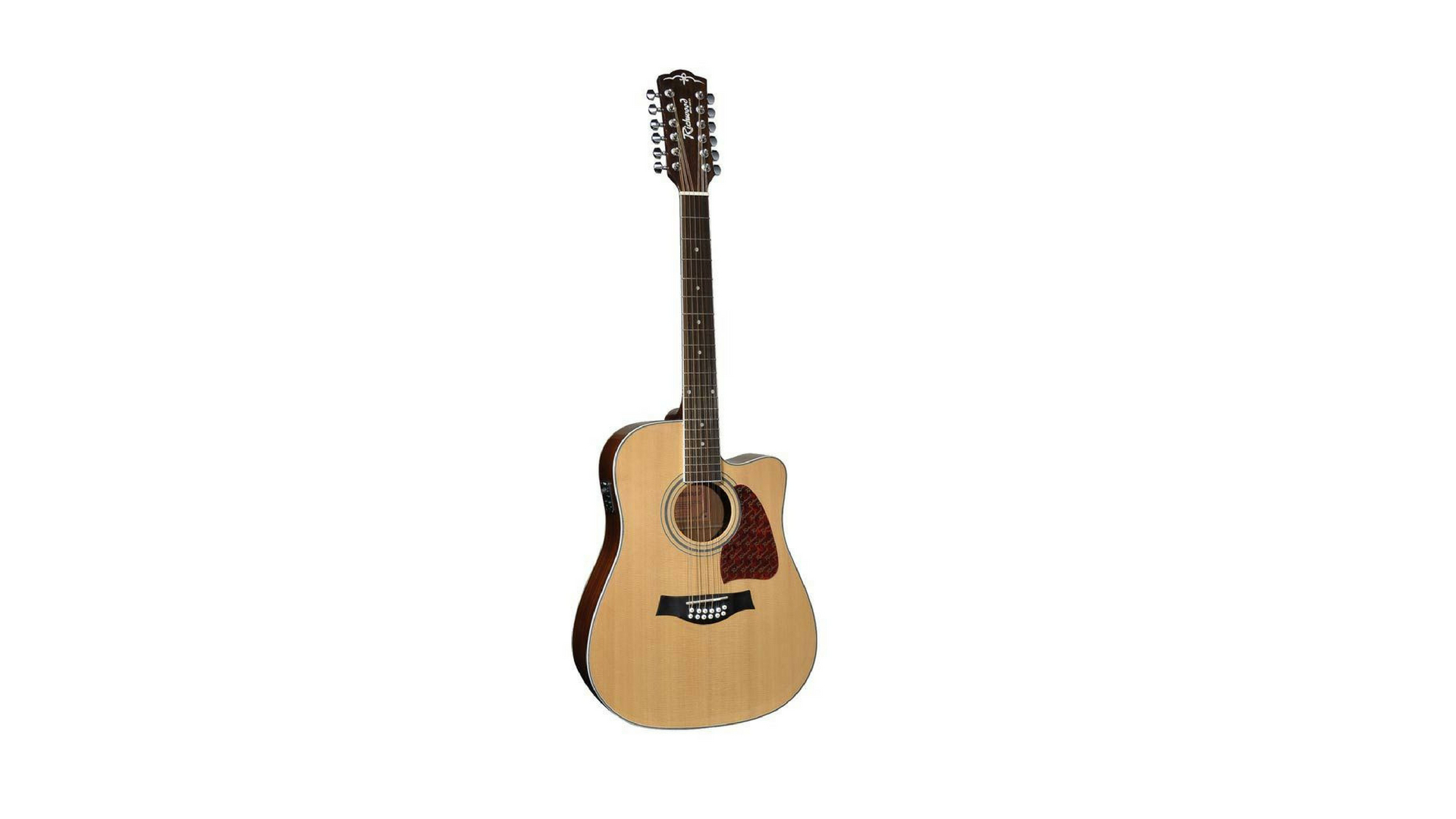Introduction
Welcome to the world of acoustic guitar! Whether you’re a beginner or an experienced player, understanding the concept of keys is essential for creating beautiful music. If you’ve ever wondered what key an acoustic guitar is in and how it affects your playing, you’ve come to the right place.
In music theory, a key refers to the set of notes that form the foundation of a composition. It determines the overall tonality and mood of a song, allowing musicians to create harmonic progressions and melody lines that complement each other. Knowing the key of a song is crucial for accompanying other musicians, improvising solos, or even writing your own songs.
In this article, we will explore various ways to determine the key of an acoustic guitar song. We’ll delve into understanding scales and keys, explore different guitar tunings, learn how to identify the key by analyzing chord progressions, and even discover how the capo can be a useful tool in changing keys. By the end, you’ll have a solid foundation for understanding and playing in different keys on your acoustic guitar.
So, whether you want to strum along to your favorite songs, jam with friends, or create your own compositions, understanding the key of an acoustic guitar will unlock a world of musical possibilities. Let’s dive in and explore the fascinating world of keys on the acoustic guitar!
Understanding Scales and Keys
To comprehend the concept of keys on the acoustic guitar, it’s crucial to have a basic understanding of scales. A scale is a sequence of musical notes ordered by pitch. The most common scale in Western music is the major scale, which consists of seven notes. These notes are named using the letters A to G, and each note represents a specific pitch.
Each major scale is characterized by its unique pattern of whole steps (W) and half steps (H). A whole step is equivalent to two half steps, and a half step represents the distance between any two adjacent notes on the guitar fretboard. For example, in the key of C major, the notes C, D, E, F, G, A, and B are played using the pattern W-W-H-W-W-W-H.
Once you understand scales, you can easily grasp the concept of keys. A key is formed by selecting a specific scale and establishing a tonal center or “home note.” The tonal center sets the foundation for the overall key, and all the chords and melodies in that key revolve around this central note.
For example, if we choose the C major scale as our foundation, then the key of C major is established, with the note C as the tonal center. In this key, chords and melodies are constructed using notes from the C major scale, resulting in a harmonious and cohesive sound.
Other common keys include G major, D major, A major, and E major. Each key has its own unique set of chords and melodies that create a distinct musical atmosphere. As you delve deeper into playing the acoustic guitar, understanding different keys and their corresponding scales will greatly enhance your musical repertoire.
By familiarizing yourself with scales and grasping the concept of keys, you’ll have a solid foundation for exploring the wonderful world of the acoustic guitar. In the next section, we’ll explore the standard tunings for acoustic guitar and how they relate to different keys.
Standard Tunings for Acoustic Guitar
Before we dive into understanding how tunings relate to keys on the acoustic guitar, let’s establish the most common tuning that beginners and seasoned players alike use: standard tuning. In standard tuning, the strings of the guitar are tuned to the pitches E, A, D, G, B, and E, starting from the thickest string (low E) to the thinnest string (high E).
Standard tuning allows for a wide range of chord voicings and melodic possibilities and is the foundation for many popular songs. When playing in standard tuning, the key of a song is often determined by the chords and melodies created using the open strings and various fretted positions on the guitar neck.
Most songs are written and arranged with the assumption that the guitar is in standard tuning. For example, if a song incorporates open chords such as G, C, D, or Am, it’s likely to be in the key of G major or a related key. By knowing the relationship between the open strings and key signatures, you can quickly identify the key of a song and play along effortlessly.
However, it’s important to note that not all songs are played in standard tuning. Some musicians and guitarists experiment with alternate tunings to create unique sounds and explore different tonalities. Alternative tunings, such as open tunings or drop tunings, can dramatically alter the key and the overall sound of a song.
For instance, in open D tuning (D A D F# A D), strumming all the open strings produces a D major chord. By utilizing different fingerings and fretting the strings, you can play different chords and melodies in the key of D major or related keys. Experimenting with open tunings can unlock new harmonic possibilities and add depth to your acoustic guitar playing.
Understanding the standard tuning for acoustic guitar is fundamental in identifying the key of a song. As we move forward, we will explore how analyzing chord progressions can further help us determine the key of a song on the acoustic guitar.
Identifying the Key by Chords
One of the most effective ways to determine the key of a song on the acoustic guitar is by analyzing its chord progressions. Chords are the building blocks of music, and they play a vital role in establishing the key and creating the overall harmonic structure of a song.
When analyzing a song’s chords, pay close attention to the chords that are repeated frequently or used prominently. This is because the most common chords in a key are often the tonic (I) chord, the subdominant (IV) chord, and the dominant (V) chord.
For instance, if you notice that the chords G, C, and D appear frequently throughout the song, there is a high likelihood that the song is in the key of G major. In this key, G is the tonic chord, C is the subdominant chord, and D is the dominant chord. By identifying these chords and their relationship to each other, you can determine the key and easily play along.
In addition to identifying the key based on commonly used chords, it’s essential to be aware of any chord progressions or patterns that are specific to a particular key. For example, the I-IV-V progression is commonly found in many songs across various genres. In the key of C major, this progression would consist of the chords C, F, and G. Recognizing familiar progressions can greatly assist in identifying the key and help you navigate the song more confidently.
Sometimes, a song may incorporate more complex chord progressions, including secondary dominant chords or borrowed chords from other keys. In such cases, a deeper understanding of music theory can be helpful in identifying the key accurately. However, as a beginner, focusing on the major chords and their relationship is usually sufficient in determining the key of a song on the acoustic guitar.
By carefully analyzing the chords used in a song, you can identify the key and gain a greater understanding of how chords function within that key. Now, let’s explore the use of capo, a handy tool that allows you to change keys on the acoustic guitar with ease.
Using the Capo to Change Keys
The capo is a small device that clamps onto the neck of the guitar, effectively shortening the length of the strings and raising the pitch of the instrument. It serves as a valuable tool for guitarists to change keys without having to learn new chord shapes or transpose the entire song.
Using a capo allows you to maintain the same finger positions for chord shapes while changing the pitch. For example, if you were playing a song in the key of G with the capo on the 2nd fret, the actual key being played would be A. The chords you play would still be G, C, D, etc., but due to the capo, the pitch would be higher, effectively changing the key.
Capos are especially useful for adjusting a song to suit a specific vocal range or to match the key of other instruments. For instance, if a singer finds a song too low to comfortably sing, placing the capo on a higher fret can raise the key and make it more suitable for their voice. Similarly, if you are playing with a pianist or a band using different instrument tunings, the capo allows you to harmonize and play in the same key, even if the actual chords are different.
When using the capo, it’s important to be aware of the new key you are playing in and adjust your playing accordingly. This means that even though the chord shapes remain the same, the actual key has changed. It’s crucial to pay attention to the new key, especially when improvising solos or playing along with other musicians.
Experimenting with the capo is an excellent way to explore different keys and discover new musical possibilities on the acoustic guitar. By simply moving the capo up or down the neck, you can play in a variety of keys without having to learn different chord shapes or transpose the entire song.
Now that we understand the concept of using the capo to change keys, let’s explore some of the common keys that acoustic guitar songs are frequently played in.
Common Keys for Acoustic Guitar Songs
When it comes to acoustic guitar songs, there are several keys that you’re likely to come across more often than others. These keys are popular among guitarists due to their comfortable chord shapes, melodic possibilities, and the overall unique sound they create on the instrument.
One of the most common keys for acoustic guitar songs is the key of G major. This key is loved for its bright and upbeat sound, and many beginners start their guitar journey by learning songs in this key. Chords such as G, C, D, and Em are frequently used in songs written in the key of G major.
The key of C major is also highly popular for acoustic guitar songs. It offers a rich and open sound, and chords like C, F, G, and Am are commonly found. Many timeless classics and folk songs are written in the key of C major, making it a great starting point for beginners.
Another key that resonates well with the acoustic guitar is D major. With its warm and resonant tones, D major is favored by many singer-songwriters and is found in numerous popular songs. Chords like D, G, A, and Bm are often used in songs written in the key of D major.
In addition to these keys, the key of E major and A major are also quite popular on the acoustic guitar. E major, being a guitar-friendly key, offers a range of possibilities with chords like E, A, B, and C#m. A major, on the other hand, has a warm and honeyed quality and utilizes chords like A, D, and E.
While these keys are commonly used, it’s important to remember that acoustic guitar songs can be written in any key. The choice of key depends on factors such as the vocal range, the desired mood, and the song’s overall artistic vision.
To expand your repertoire and improve your overall skill as an acoustic guitarist, it’s beneficial to learn songs in different keys. By doing so, you’ll become more comfortable with various chord shapes, explore different tonalities, and develop your musical versatility.
Now that we’ve explored some of the common keys for acoustic guitar songs, let’s move on to some tips for finding the key of a song by ear.
Tips for Finding the Key by Ear
Developing the ability to find the key of a song by ear is a valuable skill for any guitarist, and it helps in improving your overall musicianship. While it may seem challenging at first, with practice and careful listening, you can train your ear to identify the key of a song on the acoustic guitar. Here are some tips to help you in this process:
Listen to the Bass Note: The bass note is usually the root note of the chord and can give you a hint about the key. Pay attention to the lowest-sounding note in each chord and try to identify the pattern or progression of the bass notes.
Identify the Tonic Chord: The tonic chord is the chord that sounds like “home” and provides a sense of resolution. Listen for the chord that feels the most stable and resolved. This is often the key’s tonic chord and can help you determine the key of the song.
Listen for Chord Resolutions: Progressions that resolve to a specific chord can indicate the key. For example, if you hear a series of chords resolving to a G major chord, it suggests that the song is in the key of G major.
Recognize Common Chord Progressions: Many songs follow common chord progressions specific to a particular key. If you’re familiar with these progressions, you can identify them by ear and determine the key. Some examples include the I-IV-V progression, the I-IV-vi-V progression, and the ii-V-I progression.
Pay Attention to Melodies: Sometimes, the melody can give hints about the key. Listen for recurring notes and phrases that sound like they resolve in a specific way. These melodic resolutions can lead you to the key of the song.
Practice Active Listening: Train your ear by actively listening to songs and trying to identify the key. Pay attention to the various musical elements and how they interact. The more you practice, the better you’ll become at discerning keys by ear.
Use Reference Tones: If you have access to a piano or a tuning app, you can use reference tones to compare with the chords in the song. By matching the chords with the reference tones, you can determine the key more accurately.
Remember, finding the key of a song by ear takes time and practice. Start with simpler songs and gradually work your way up to more complex compositions. With consistent effort, your ear will become more attuned to identifying keys, and you’ll become a more intuitive player on the acoustic guitar.
Now that we’ve explored tips for finding the key by ear, let’s wrap up our discussion.
Conclusion
Understanding the key of an acoustic guitar is essential for any guitarist. It allows you to strum along to your favorite songs, improvise solos, and create your own music. By familiarizing yourself with scales, identifying chords, and utilizing tools like the capo, you can easily navigate different keys on the acoustic guitar.
We explored the importance of scales and keys in music theory, highlighting how the major scale forms the foundation for keys. We discussed the standard tuning for acoustic guitar and how it relates to different keys, as well as the use of a capo to change keys seamlessly.
Identifying the key by analyzing chord progressions proved to be a valuable technique, as certain chords tend to appear more frequently in specific keys. Additionally, we noted the common keys, such as G major, C major, D major, E major, and A major, that are often used in acoustic guitar songs.
We provided tips for finding the key by ear, which included listening for the bass note, identifying the tonic chord, recognizing chord resolutions, paying attention to melodies, practicing active listening, and using reference tones. These techniques will help you develop your ear and become more adept at determining the key of a song.
By mastering the skill of identifying keys on the acoustic guitar, you’ll open up a world of musical possibilities. You’ll be able to play along with other musicians, transpose songs to suit your vocal range, and explore different tonalities effortlessly.
So, grab your acoustic guitar, start experimenting with different keys, and let the music guide you on your musical journey. With practice and dedication, you’ll become a skilled guitarist who can confidently play in any key. Happy strumming!









